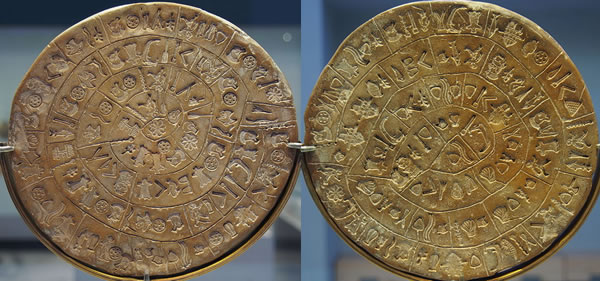Vinča / Old European
A collection of symbols found on many of the artefacts dating from between 6,000 to 4,500 BC excavated from sites in south-east Europe, in particular from Vinča near Belgrade. There is no agreement on whether these symbols are a writing system.Further details

Indus/Harappa script
A collection of symbols used in the Indus valley of India between about 3,500 and 2,000 BC. Some believe that these symbols are non-linguistic, while others argue that they represent a Dravidian language.Further details
http://en.wikipedia.org/wiki/Indus_script
http://www.ancientscripts.com/indus.html
http://www.safarmer.com/index.html#Rao
http://www.harappa.com/script/
Proto-Elamite
A script which first appeared in about 2900 BC in Suse (Susa), the capital of Elam, in south-western Persia (modern Iran). It has yet to be deciphered and the language it represents in unknown.Further details
Old Elamite
A partially deciphered syllabic script used between about 2250 and 2220 BC in the kingdom of Suse in south-western Persia (modern Iran). It was named after Elam, the capital of Suse.Further details
Linear A
A script used between about 1800 and 1450 BC on Crete. Linear A is possibly related to Linear B but the language it was used to write is not known.Further details
Phaistos Disk
The Phaistos Disk was found in the Minoan Palace of Phaistos on Crete in 1908 and is thought to date from the 17th century BC. On it is inscribed an unknown script and there are many theories about the language it represeents and what it means. No other evidence of this script has been found.
Further details: http://en.wikipedia.org/wiki/Phaistos_Disc
Voynich Manuscript
The Voynich Manuscript is named after Wilfrid M. Voynich, an antiquarian book dealer who acquired it in 1912. It is lavishly illustrated manuscript codex of 234 pages, written in an unknown script. One theory is that is was written sometime during the 13th century by a Franciscan friar, Roger Bacon (1214-1294). Many attempts have been made to decipher the text but none have succeeded. Some think the manuscript is gibberish, and was probably a practical joke played on Rudolph II.
Further details: http://www.voynich.nu
http://www.mystae.com/restricted/streams/scripts/voynich.html
http://voynich.wikia.com/wiki/Voynich_manuscript_Wiki
Rohonc Codex
The Rohonc Codex (Rohonci kódex) is named after the city of Rohonc, in Western Hungary (now Rechnitz, Austria), where it was kept until 1907, when it was moved to Budapest. The origin of the codex is uncertain. In 1838 it was donated to the Hungarian Science Academy by Gusztav Batthyány, a Hungarian count, together with his entire library. It is written in an unknown language and script and has defied all attempts to decipher it.For more details of the Rohonc Codex, see:
http://en.wikipedia.org/wiki/Rohonczi_Codex
http://www.dacia.org/codex/
Rongo Rongo
A script once used on Easter Island until the 1860s, after which knowledge of the script was lost. The language it represents is Rapa Nui, the Polynesian language spoken on Easter Island.Further details









.jpg)
.jpg)

.jpg)





0 comments:
Post a Comment
Note: Only a member of this blog may post a comment.